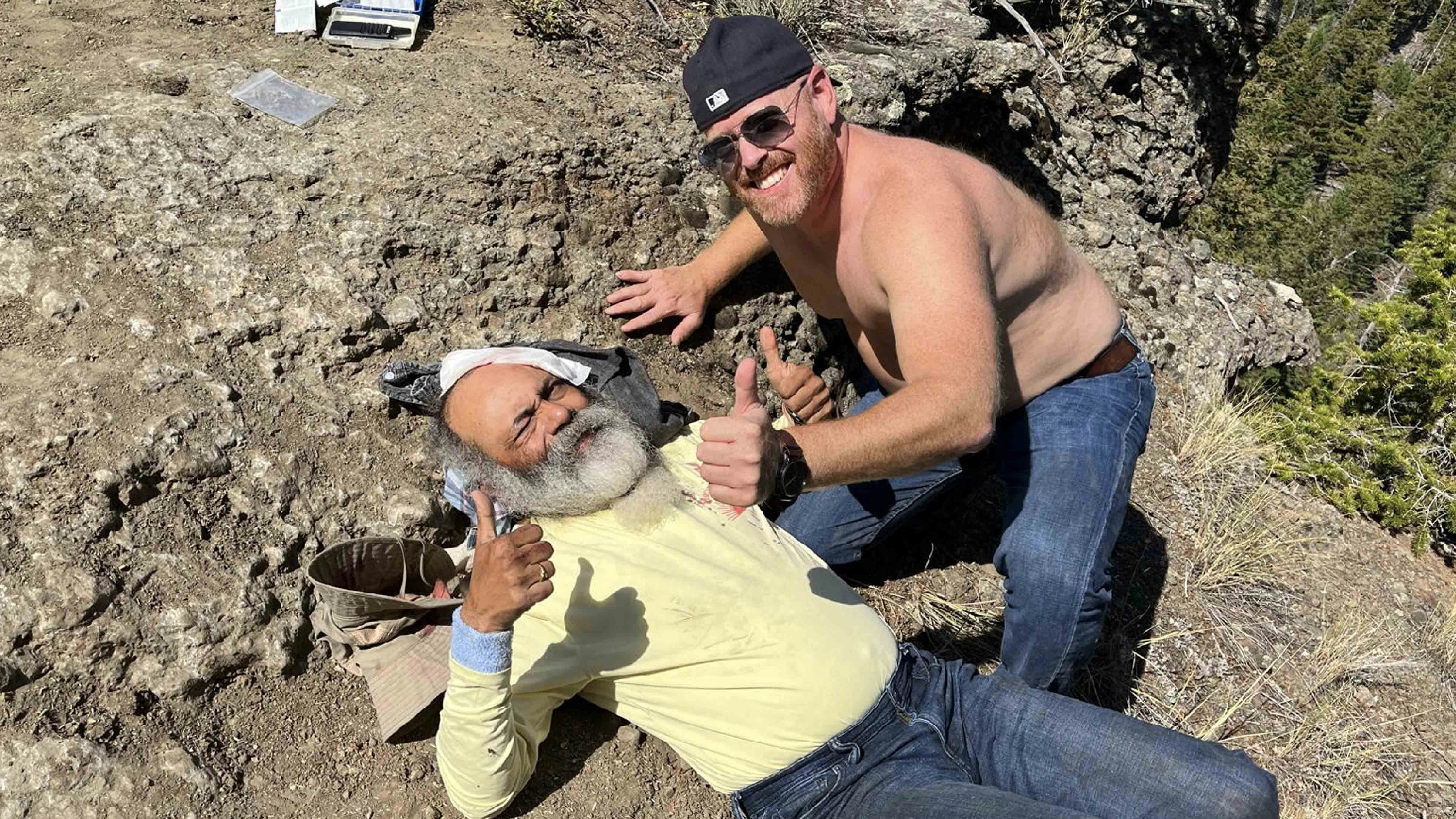Every year, the snowpack in the southern stretch of the Absaroka Range melts to reveal the head, neck and back of a majestic mustang. The unique sign of the coming Wyoming summer is visible on the mountainside towering over the South Fork of the Shoshone River outside Cody.
The Ishawooa Horse's Head is more than a unique optical illusion in the snow-capped mountains. Ranchers and locals have used it as a seasonal guide for the last century, and possibly longer.
"It's one of the icons of the South Fork," Cody author and historian Bob Richard told Cowboy State Daily. "Ranchers on the South Fork all looked at it as a sign of the season, and it's always been there."
Taking The Snow Horse By The Reins
There are many names for the snowy sight. Some call it simply the “Snow Horse," while others call it the Ishawooa Horse's Head for the mountain creek that runs through the area.
"It's a beautiful thing to look at, and it forms every year," said Cody resident Mack Frost. "You can follow the horse's back down to the lower right, and there are patches that melt out faster than others, so it looks like it has spots on its rump. One of the other snowbanks in the area flips up like a tail that's waving in the wind. And it, for all intents and purposes, looks like the backside of a horse and its head."
However, the most important feature of the Snow Horse is "the reins" underneath the horse's head. When the horse's reins disappear is the sign that the mountains are traversable, either by foot or horseback, for the rest of the season.
"The legend is when the reins are cut, or the horse's throat is slit, that's the end of high water," Frost said. "The snows are melted enough that you can get over the high passes into the backcountry."
Richard learned about the Ishawooa Horse's Head from his grandfather. Like many ranchers in the early settlement of Cody, he found this unique phenomenon to be a valuable tool.
"The ranchers on the South Fork all looked at it as a sign as to when they had high water, when the high water would stop, and when you could get into Thorofare," he said.
The Thorofare is the most isolated stretch of land in Wyoming, and one of the most isolated in the entire Lower 48 United States. It stretches through two national forests and sections of Yellowstone National Park.
Ranchers used the Thorofare as a reliable pass between Cody and Jackson. Richard said they placed great stock in the status of the Horse Head to ensure a safe journey through the mountains.
"My grandfather said that when the reins had melted, the passes in the Thorofare would be open," he said. "The high water reached its peak at a certain point when the horse's head opened up under the neck."
Here And Gone
The Ishawooa Horse's Head is an annual occurrence in the Absaroka Range, which typically rears its head in May and lasts until late June or early July. Richard said its duration depends on the year.
"It depends on the snowfall in the winter, the snowmelt in spring, and how warm it is in summer," he said. "We all watch for when the snow horse starts to show up, usually in May. The reins normally aren't melted until around the Fourth of July, as runoff affects this large snowbank."
Nobody is entirely sure when the Horse's Head was first spotted or how long it's been giving vital information to the people living where they could see it. Frost was certain the legend is as old as Cody itself, and probably much longer than that.
"I'm sure that the first settlers were quite aware of the image of the snow horse, and I'm sure the Indians were too," he said. "The whole idea of the reins being cut or the horse's throat being slit, meaning they can finally get over the top of the passage, probably came from them."
Frost remembers when he first sighted the Ishawooa Horse's Head. He was working as a chore boy on the Triangle X Ranch along the South Fork in 1966 when the owners pointed it out.
"I worked for Don and Roz Siggins at their dude ranch when they pointed out the horse's head in the first week of June," he said. "I couldn't see it right off the bat, and I wasn't sure what the hell they were talking about. And it was about a week later that I recognized the snowbank, and I've been able to spot it ever since."
Once it's been seen, it's impossible to miss. That's why it's been such a reliable and comforting spectacle for the residents of northwest Wyoming, and always will be.
"I've grown up with it," Richard said. "My dad, Jack Richard, has some great aerials of the snow horse with the Tetons in the background. And I've photographed it from the airport to the T E Ranch and many places. It's always been there.”
Contact Andrew Rossi at arossi@cowboystatedaily.com

Andrew Rossi can be reached at arossi@cowboystatedaily.com.













